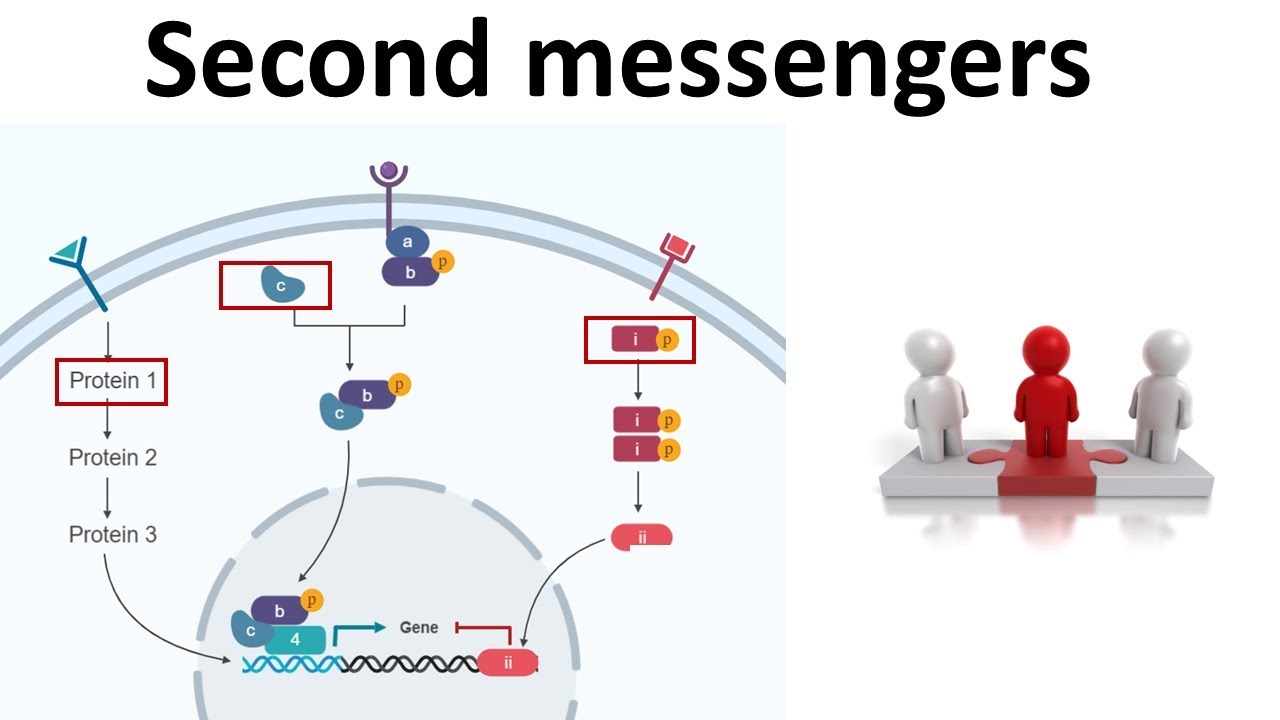
Second messengers play a crucial role in cellular communication. These small molecules transmit signals from receptors on the cell surface to target molecules inside the cell, creating a cascade of biochemical events. But what exactly are second messengers, and why are they important? In this post, we'll explore 25 fascinating facts about these tiny yet mighty molecules. From their discovery to their diverse functions, you'll gain a deeper understanding of how second messengers influence everything from heartbeats to hormone responses. Whether you're a science enthusiast or just curious about how your body works, these insights will shed light on the invisible messengers that keep our cells in sync.
What Are Second Messengers?
Second messengers are molecules that transmit signals from receptors on the cell surface to target molecules inside the cell. They play a crucial role in cellular communication and help regulate various physiological processes.
- Second messengers amplify the signal received by receptors, ensuring a robust cellular response.
- They are typically small molecules, allowing them to diffuse quickly within the cell.
- Common second messengers include cyclic AMP (cAMP), cyclic GMP (cGMP), inositol triphosphate (IP3), and calcium ions (Ca2+).
- These molecules are often produced or released in response to the activation of G-protein-coupled receptors (GPCRs).
Types of Second Messengers
Different types of second messengers exist, each with unique roles and mechanisms. Understanding these types can provide insight into their diverse functions.
- Cyclic AMP (cAMP) is synthesized from ATP by the enzyme adenylate cyclase.
- Cyclic GMP (cGMP) is produced from GTP by the enzyme guanylate cyclase.
- Inositol triphosphate (IP3) is generated by the cleavage of a phospholipid called PIP2 by the enzyme phospholipase C.
- Calcium ions (Ca2+) are released from intracellular stores or enter the cell through ion channels.
Functions of Second Messengers
Second messengers are involved in a wide range of cellular processes. Their functions are vital for maintaining cellular homeostasis and responding to external stimuli.
- cAMP activates protein kinase A (PKA), which phosphorylates various target proteins.
- cGMP activates protein kinase G (PKG), influencing processes like smooth muscle relaxation.
- IP3 binds to receptors on the endoplasmic reticulum, causing the release of Ca2+.
- Ca2+ acts as a cofactor for many enzymes and proteins, including calmodulin.
Role in Signal Transduction
Signal transduction pathways rely heavily on second messengers to relay information from the cell surface to the interior.
- Second messengers help convert extracellular signals into intracellular actions.
- They ensure specificity in signaling pathways by activating distinct sets of proteins.
- The rapid production and degradation of second messengers allow for precise temporal control of cellular responses.
- Cross-talk between different second messenger pathways can integrate multiple signals.
Clinical Relevance of Second Messengers
Second messengers are not only important for normal cellular function but also have significant implications in health and disease.
- Dysregulation of second messenger pathways can lead to various diseases, including cancer, diabetes, and heart disease.
- Many drugs target second messenger systems to treat these conditions.
- For example, beta-blockers reduce cAMP levels to manage hypertension.
- Phosphodiesterase inhibitors increase cAMP or cGMP levels, used in treating conditions like erectile dysfunction and heart failure.
Research and Future Directions
Ongoing research continues to uncover new aspects of second messenger biology, offering potential for novel therapeutic approaches.
- Advances in imaging techniques allow scientists to visualize second messenger dynamics in real-time.
- Understanding the spatial and temporal aspects of second messenger signaling can lead to more targeted therapies.
- Researchers are exploring the role of second messengers in neurodegenerative diseases like Alzheimer's.
- Synthetic biology approaches aim to engineer cells with customized second messenger pathways for therapeutic purposes.
- The development of new drugs targeting specific second messenger components holds promise for treating a wide range of diseases.
The Final Word on Second Messengers
Second messengers are crucial in cell signaling. They help transmit signals from receptors on the cell surface to target molecules inside the cell. This process is vital for various physiological responses, including hormone action, neurotransmission, and immune responses. Understanding second messengers can lead to breakthroughs in medical research, potentially offering new treatments for diseases.
These molecules, like cAMP, IP3, and calcium ions, play distinct roles in different signaling pathways. Their importance can't be overstated. They ensure cells respond appropriately to external stimuli, maintaining homeostasis and proper function.
Grasping the basics of second messengers not only enriches your knowledge of cellular biology but also highlights the intricate dance of life at the molecular level. So, next time you think about how your body works, remember the unsung heroes—second messengers—working tirelessly behind the scenes.
Was this page helpful?
Our commitment to delivering trustworthy and engaging content is at the heart of what we do. Each fact on our site is contributed by real users like you, bringing a wealth of diverse insights and information. To ensure the highest standards of accuracy and reliability, our dedicated editors meticulously review each submission. This process guarantees that the facts we share are not only fascinating but also credible. Trust in our commitment to quality and authenticity as you explore and learn with us.
